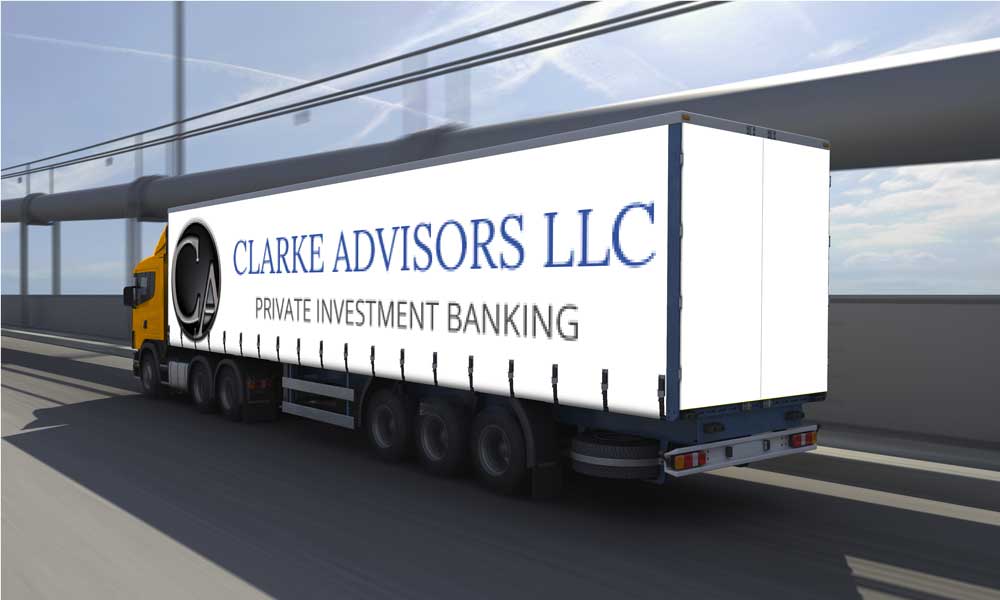

As a professional in the logistics industry, it’s crucial to stay informed about transportation investments and deal flow. By delving into the trucking industry’s current landscape and its influence on North American package deals, this blog post provides an in-depth look at how major transactions are influencing logistics companies’ business development plans with expert Spencer Tenney’s (from the advisory firm Tenney Group) input, as well as advice for navigating significant deal flow and an examination of how larger deals are shaping business development strategies in the logistics space supply chain.
Table of Contents:
- Identifying Potential M&A Opportunities in the Trucking Industry
- Analyzing Financials of Target Companies
- Negotiating Terms of Mergers & Acquisitions
- Structuring Deals to Maximize Value
- Closing Transactions & Executing Post-Merger Integration
- FAQs in Relation to M&A Trucking
- What is the biggest issue with the trucking industry in the United States?
- What are the drivers of M&A?
- What is the market structure of trucking?
- How to get a M&A experience?
- Conclusion


Identifying Potential M&A Opportunities
The trucking sector offers a plethora of M&A prospects. As an investment banking firm focused on transportation and logistics, we understand the complexities of this market. Our team is experienced in evaluating potential M&A targets, understanding supply chain capabilities, conducting due diligence, negotiating terms, structuring deals to maximize value, and closing transactions.
When it comes to identifying potential M&A opportunities in the trucking industry, our team starts by analyzing current trends. We look at factors such as consolidation within the sector; technological advancements; changes in customer demands; shifts in regulatory environments; and emerging markets that may be attractive for growth or cost savings. By understanding these dynamics from both a macro-level perspective and a micro-level view of individual companies’ operations, we can identify those with strong competitive advantages or weaknesses that could make them attractive targets for acquisition or merger activity.
Our team assesses the balance sheet strength of any potential target company by scouring key metrics such as revenue growth rate, operating margins, and cash flow patterns over time compared to competitors’ performance levels. We are always on the lookout for red flags that could be indicative of high debt levels or declining profitability indicators, which may pose a greater risk when investing in the business.
By understanding the competitive landscape of this industry, investors can identify potential M&A opportunities that align with their investment goals. Moving forward, it is important to analyze the financials of target companies in order to assess whether an acquisition would be a good fit for both parties involved.
Key Takeaway: As an experienced investment banking firm in the transportation and logistics sector, we analyze current trends to identify M&A opportunities for trucking companies. We thoroughly evaluate potential targets by looking at their balance sheets and scrutinizing key metrics such as revenue growth rate and operating margins before making any decisions – no stone is left unturned when it comes to ensuring a safe investment.


Analyzing Financials of Target Companies
When it comes to assessing the value of a target company for potential M&A opportunities in thisindustry, analyzing financials is key. This includes taking a close look at balance sheets, income statements, and cash flow statements. It’s important to identify any red flags that could indicate issues with profitability or liquidity before making an investment decision.
The financial analysis also involves looking at ratios such as debt-to-equity and return on assets (ROA). Examining ratios like debt-to-equity and ROA can give an indication of how well the firm is handling its funds and any potential threats that may come with investing in it. Additionally, evaluating historical performance trends can help determine if the company has been growing steadily or experiencing volatility over time.
It’s also essential to consider other factors beyond just financials when performing due diligence on a target company. These include competitive landscape analysis, customer segmentation data, market share information, pricing strategies, operational efficiencies, and more. Considering all the elements mentioned is necessary for a well-informed determination on whether or not an acquisition is prudent, both from a strategic and fiscal viewpoint.
Ultimately, thorough financial analysis is critical for understanding the true value of a transportation & logistics business prior to investing in it or pursuing an M&A transaction involving it. Thorough contemplation of all applicable info is a must for investors to accurately measure the hazard connected with their investments, guaranteeing maximum returns.
Analyzing the financials of target companies is a crucial step in any M&A process, as it provides an understanding of how potential investments or acquisitions could impact your business. Negotiating for M&A transactions necessitates an understanding of both entities’ finances to guarantee that all involved parties are content with the result.
Key Takeaway: Financial analysis is the cornerstone of any M&A transaction involving a trucking company, requiring deep dives into financials as well as an understanding of competitive dynamics and operational efficiencies. The risk assessment must be comprehensive to maximize returns on investment in order to make an informed decision about pursuing such deals.


Negotiating Terms of Mergers & Acquisitions
Navigating the intricate landscape of M&A deals necessitates a deep comprehension of financials, industry specifics, and legal understanding. Our team of specialists in the field can discover possible M&A possibilities for our customers. We understand the nuances of this sector and are adept at analyzing financials to assess target companies’ value propositions.
Our squad collaborates with purchasers or vendors all through the bargaining process to make certain they obtain the most advantageous deal feasible. We use data-driven strategies such as discounted cash flow analysis to accurately determine fair market values for target companies. This helps us structure deals that maximize returns on investments while minimizing risk exposure for our clients.
We also leverage our network of contacts within the industry when negotiating M&A transactions. Our relationships give us access to information about target companies not available through public sources, which allows us to better evaluate their potential upside or downside risks associated with a transaction before it takes place.
Hammering out the specifics of a merger or acquisition is critical for crafting lucrative and successful agreements. Structuring the arrangement in a way that optimizes value for all stakeholders is critical to guaranteeing prosperous and advantageous mergers or acquisitions.


Structuring Deals to Maximize Value
When structuring deals to maximize value, it is important to consider the needs of both parties involved. It is essential to create a structure that minimizes risk while ensuring both sides receive what they need from the transaction. This can be done by carefully evaluating each party’s goals and objectives and making sure those are met in the deal structure.
When considering M&A, one can opt for stock trades, asset purchases, or money-based arrangements – each having its own pros and cons that must be weighed when picking a suitable agreement. Each option has its own advantages and disadvantages depending on the situation, so careful consideration should be given when selecting an appropriate deal structure for any M&A transaction.
Taxation must be considered when crafting a deal, as it may drastically influence the value each party gains from the arrangement. For instance, if one party pays taxes before receiving their share of the proceeds, then they will end up with less money than expected which could lead to dissatisfaction with the final outcome of the transaction. Therefore, tax planning should be taken into account when negotiating terms of an M&A agreement in order to ensure maximum value for all parties involved.
In addition, other elements, such as warranties and indemnification clauses, should also be considered during negotiations as these provide additional protection against potential liabilities associated with any future claims made by either party after closing a deal. Negotiating these provisions upfront helps minimize risk for both sides while maximizing the overall value of an M&A transaction.
Structuring deals to maximize value requires an in-depth understanding of the industry, market trends, and financials. With that knowledge in hand, closing transactions and executing post-merger integration can be a smooth process.
Key Takeaway: When structuring these deals, it is essential to evaluate both parties’ goals and objectives while taking into account tax implications and warranties indemnification clauses in order to maximize value for all involved. Thorough haggling should be carried out to guarantee that all parties receive maximum benefit from the transaction.
Closing Transactions & Executing Post-Merger Integration
Closing transactions and executing post-merger integration plans are essential steps in the M&A process. As an investment banking firm focused on transportation, we understand the complexities of merging two companies into one. We have a team of experienced professionals who specialize in closing deals quickly and efficiently while ensuring all legal requirements are met.
Our staff will inspect all documents meticulously to make certain they are exact and comprehensive prior to authorizing any deals or contracts. Once signed, our experts will work with both parties to ensure a smooth transition into the new ownership structure by creating detailed integration plans that address operational changes, financials, staffing needs, etc. We take pride in providing comprehensive solutions tailored to each client’s unique situation so they can rest assured their interests are being taken care of throughout the entire process.
In addition to reviewing documents for accuracy and completeness, our team also offers advice on how best to maximize value when it comes time for closing transactions or integrating post-merger operations. Our team’s expertise in the field can help recognize potential prospects that may be overlooked but could potentially lead to higher profits if correctly utilized. We provide clients with actionable insights backed up by data so they can make informed decisions about their investments without taking unnecessary risks or making hasty choices due to a lack of information or experience in this area.
Key Takeaway: Our team of experienced investment bankers specializes in swiftly and efficiently closing deals in the transportation and logistics space, as well as providing actionable insights for maximizing value. We make sure all legal requirements are met while helping clients transition smoothly into the new ownership structure with detailed integration plans tailored to their unique situations.
FAQs in Relation to M&A in the Freight Market
What is the biggest issue with the trucking industry in the United States?
The biggest issue is a lack of driver availability. This has been exacerbated by an aging workforce, increasing regulations, and competition from other industries for labor. Additionally, rising costs associated with fuel and insurance have put pressure on margins, leading to decreased profitability for many operators. Finally, technological advancements such as autonomous vehicles are also creating uncertainty about future demand for traditional truckers. The market situation has become a challenge for truckers, making it hard to draw in and keep capable drivers at reasonable wages.
What are the drivers of M&A?
M&A drivers can be broadly classified into two categories: strategic and financial. Strategic M&A is propelled by a wish to attain an edge over the competition, like admittance to fresh markets or technologies. Financial M&A is motivated by potential cost savings, increased profitability, or higher returns on investments. Other factors that may drive an M&A include tax benefits, economies of scale from consolidation, diversification of risk exposure, and/or gaining control over resources in order to increase shareholder value.
What is the market structure of trucking?
The trucking market is primarily composed of two distinct structures: for-hire and private. For-hire trucking firms are those that sign contracts with shippers to move items from one place to another, while private fleets belong solely to companies that use them for their own shipping purposes. Both models offer advantages in terms of cost efficiency, flexibility, and control over transportation operations. The trucking sector is extremely competitive and dispersed, featuring numerous small- to medium-sized enterprises engaged in both for-hire and private fleet services.
How to get an M&A experience?
For those wishing to gain expertise in M&A within the transportation and logistics industry, a career as an investment banker is recommended. Investment bankers can give guidance to customers on how best to arrange their investments, for example, through M&A. They also help identify potential buyers or sellers for businesses, negotiate deals between them, assess financial risks associated with any proposed transaction, analyze data related to the business’s performance and operations, create presentations outlining potential opportunities for investors or lenders, evaluate market conditions that could affect a deal’s success rate and manage due diligence processes. With this expertise in hand from working with experienced professionals at an investment banking firm specializing in transportation & logistics M&A transactions will be well equipped with the necessary skillset needed for successful outcomes.


Conclusion
To maximize value when pursuing an M&A deal, it is important to identify potential opportunities through market analysis, analyze the financials of target companies, negotiate terms effectively, and structure deals appropriately. With careful planning and execution on all fronts of the transaction process, from identification to post-merger integration, successful transactions are achievable.
Let Clarke Advisors help you navigate the complex world of transportation M&A. Our experienced team will guide you through every step to ensure a successful transaction.


